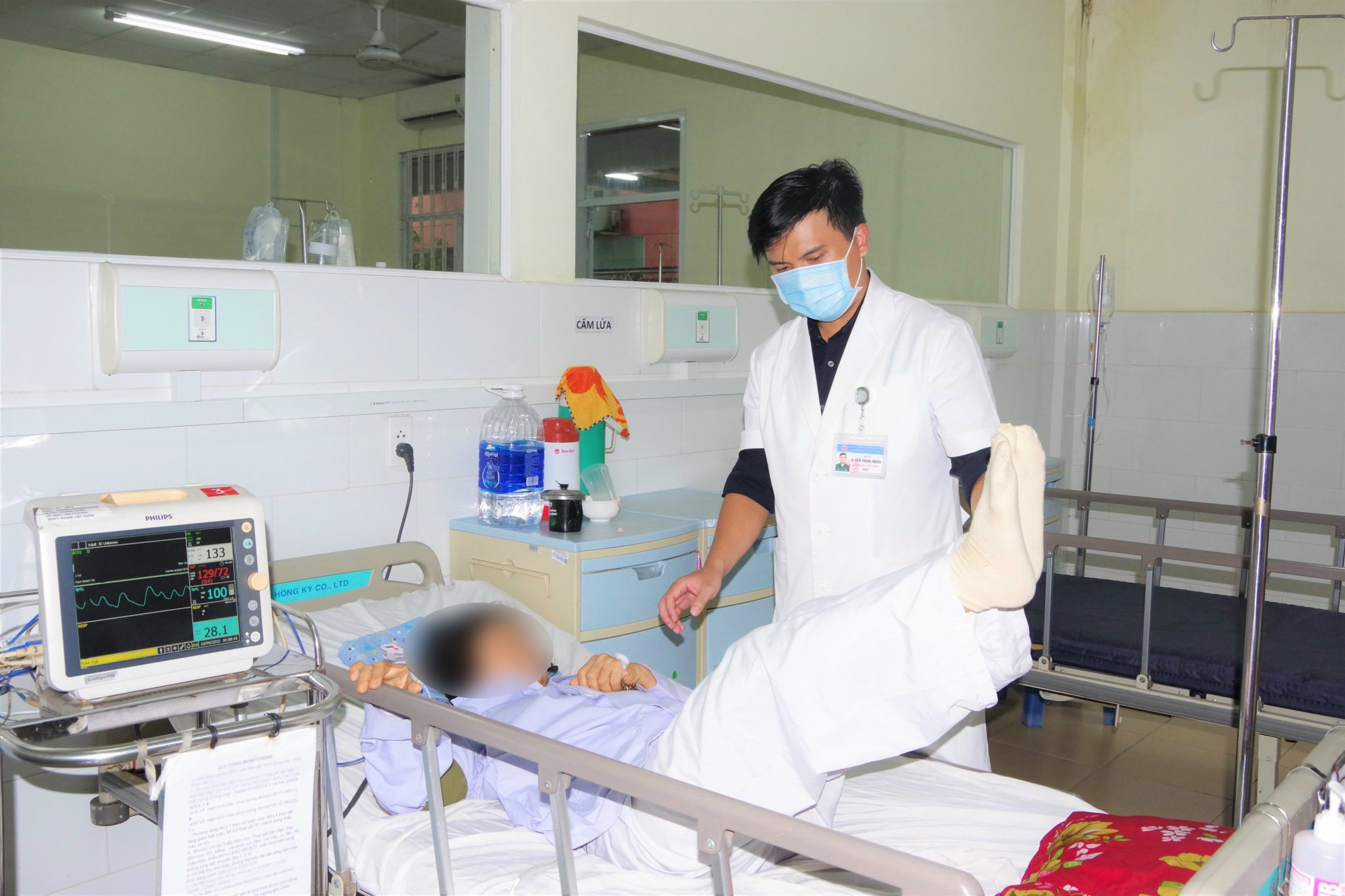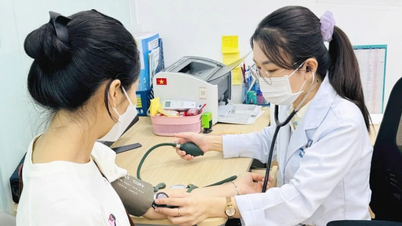MSc - Doctor Hoang Tien Trong Nghia, Head of the Department of Neurology - Military Hospital 175 (HCMC), said that primary headaches are common in young people. At the hospital, primary headaches account for 90% of patients coming for examination and the most common are migraine or tension headaches.
Watch out for persistent headaches
Recently, Military Hospital 175 admitted patient TTL (21 years old), a student. L. came to the clinic with a headache and insomnia. L. said that 2 months before being hospitalized, she suddenly had a persistent, cyclical headache that made her feel tired all the time, affecting her work and study. Notably, L. only had pain on one side of her head and was sensitive to light.
After taking a medical history and examining her, the doctor noted that L. had a migraine headache. The doctor advised her to change her lifestyle and gave her medication. After 1 week of treatment, L.'s headache disappeared. However, the disease was at risk of recurring, so the doctor prescribed her preventive medication.

Master - Doctor Hoang Tien Trong Nghia examines a patient
According to Dr. Nghia, there are many factors related to primary headaches such as: Using alcohol, beer; some foods such as processed meat containing nitrates; using nicotine, addictive substances; lack of sleep, insomnia, stress; little activity; sinusitis causing cough, runny nose... These are the causes that trigger primary headaches, affecting daily life.
Dr. Dinh Vinh Quang, Head of the Department of Neurology - People's Hospital 115 (HCMC), said that headaches are a common symptom in many people. There are normal headaches that will go away on their own. However, some headaches are very dangerous.
If one of the following symptoms appears: sudden headache when working hard; severe headache (possibly due to stroke, cerebral hemorrhage, meningeal hemorrhage); headache with neurological symptoms (mouth distortion, paralysis of limbs...); headache accompanied by symptoms such as increased blood pressure, slower heart rate...; headache with increasing severity; people over 50 years old... then you need to go to the hospital for examination and timely treatment.
Don't panic.
According to Dr. Quang, headaches are divided into two types: primary and secondary. Secondary headaches are caused by other diseases such as brain tumors, strokes, encephalitis, etc. Primary headaches occur due to dysfunction or overactivity of pain-sensitive structures in the head, unrelated to any underlying disease. The most common types are migraines, tension headaches, and cluster headaches.
Doctor Nghia recommends that in order to limit primary headaches, patients need to ensure good sleep such as sleeping on time, limiting the use of phones, watching TV before going to bed... In addition, it is necessary to eat on time, not skip meals; limit eating foods that trigger headaches such as processed meats containing nitrates... In addition, it is advisable to exercise regularly and limit stress. Performing these activities well can reduce the intensity of headaches.
For some types of headaches, such as migraines, patients are advised to turn off the lights before going to bed, cool the neck area if possible, and drink some coffee. In particular, it is recommended to keep a headache diary.
"This is very important to monitor the pain and also provide data for doctors to see how the headache occurs, how often it occurs, etc., to help patients use appropriate medication and provide advice on pain relief. In addition, patients must be advised to understand and accept their headaches. Avoid the situation where patients are confused and have to go to many places for examination" - Dr. Nghia emphasized.
When should I get an MRI or CT scan?
In response to the question of whether people with headaches should have a CT scan or MRI to check for stroke, Dr. Nghia explained that CT or MRI are paraclinical imaging tools that help doctors diagnose stroke. "Stroke here means infarction, intracranial venous thrombosis... However, not everyone is prescribed a CT scan or MRI. Because this is an expensive paraclinical method and has side effects. Not every headache requires a CT scan or MRI," Dr. Nghia affirmed.
According to Dr. Nghia, CT or MRI scans are used in cases where the patient has high risk factors or has a transient ischemic attack. That is, if the patient has stroke-like symptoms but recovers quickly - the high-risk group that needs to be examined will be prescribed an MRI or CT scan.
Source




![[Photo] Ho Chi Minh City holds funeral for former President Tran Duc Luong](https://vphoto.vietnam.vn/thumb/1200x675/vietnam/resource/IMAGE/2025/5/24/9c1858ebd3d04170b6cef2e6bcb2019e)

![[Photo] The Government Standing Committee works with ministries and branches on the real estate market situation.](https://vphoto.vietnam.vn/thumb/1200x675/vietnam/resource/IMAGE/2025/5/24/e9b5bc2313d14c9499b8c9b83226adba)




















![[Photo] Party and State leaders visit former President Tran Duc Luong](https://vphoto.vietnam.vn/thumb/1200x675/vietnam/resource/IMAGE/2025/5/24/960db9b19102400e8df68d5a6caadcf6)




































































Comment (0)